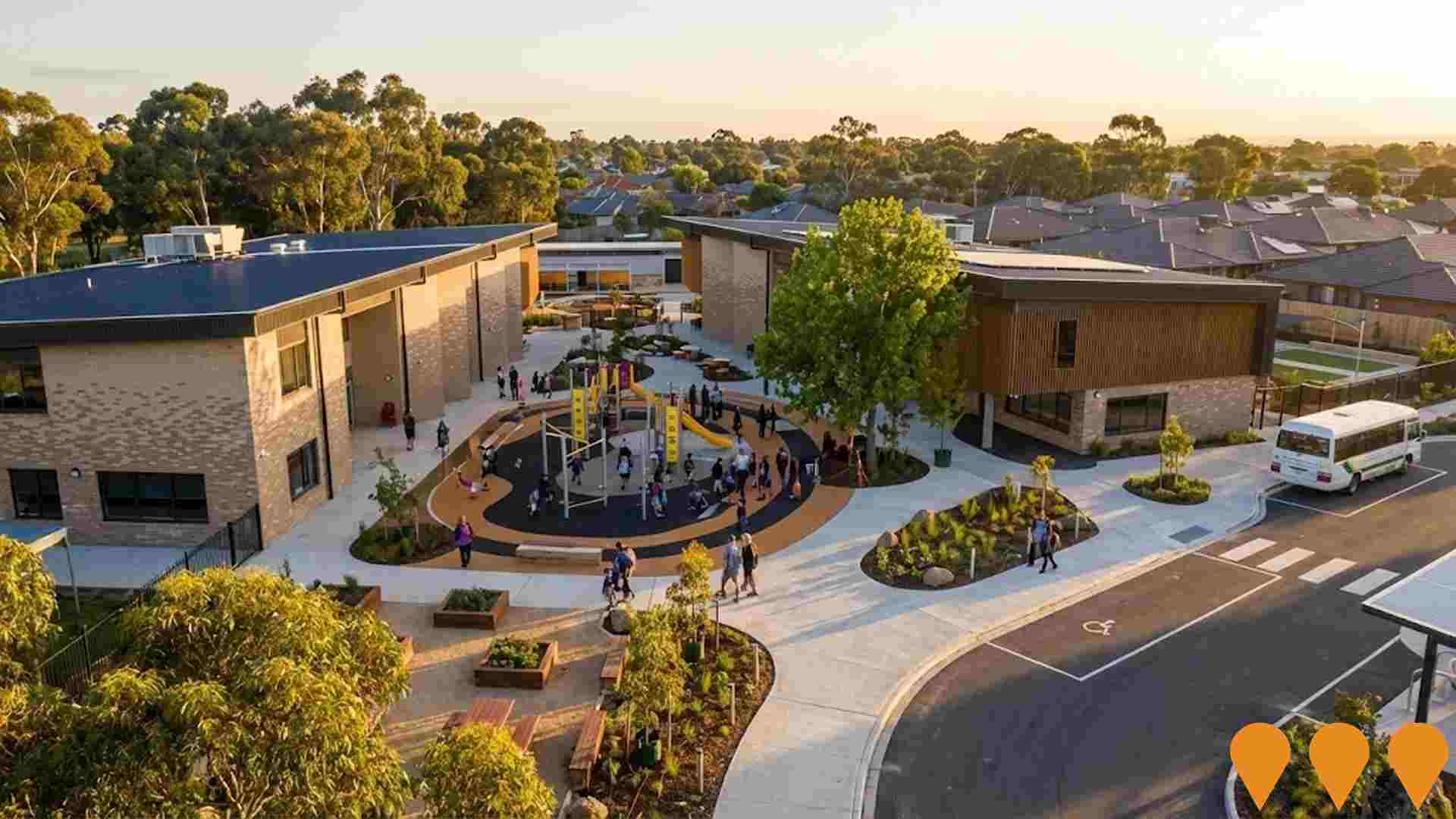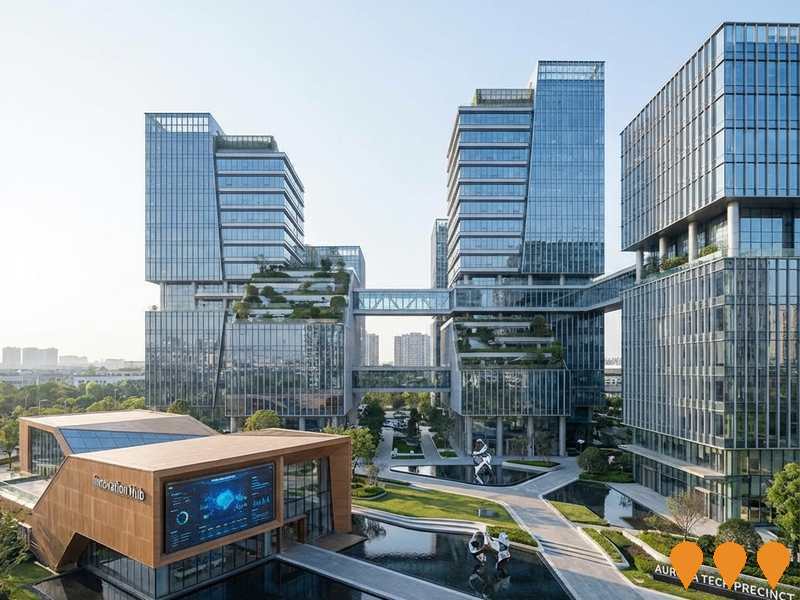Chart Color Schemes
est. as @ -- *
ABS ERP | -- people | --
2021 Census | -- people
Sales Activity
Curious about local property values? Filter the chart to assess the volume and appreciation (including resales) trends and regional comparisons, or scroll to the map below view this information at an individual property level.
Find a Recent Sale
Sales Detail
Population
Population growth drivers in Cranbourne are strong compared to national averages based on AreaSearch's ranking of recent, and medium to long-term trends
Cranbourne's population, as of August 2025, is approximately 23,003 people. This figure represents an increase of 1,722 individuals since the 2021 Census, which recorded a population of 21,281. The growth is inferred from ABS estimates showing an estimated resident population of 22,544 in June 2024 and an additional 450 validated new addresses since the Census date. This results in a population density ratio of 1,765 persons per square kilometer, higher than the average across national locations assessed by AreaSearch. Cranbourne's growth rate of 8.1% since the census is within 0.5 percentage points of the national average (8.6%), indicating strong growth fundamentals. Overseas migration contributed approximately 59.7% of overall population gains in recent periods.
AreaSearch uses ABS/Geoscience Australia projections for each SA2 area, released in 2024 with a base year of 2022. For areas not covered by this data, AreaSearch employs Victorian Government Regional/LGA projections from 2023, adjusted using weighted aggregation methods to SA2 levels. Growth rates by age group are applied across all areas for the years 2032 to 2041. Based on these projections, Cranbourne is expected to grow by an above median rate nationally, with a projected increase of 5,020 persons by 2041, representing a total growth of 19.8% over the 17-year period.
Frequently Asked Questions - Population
Development
AreaSearch assessment of residential development activity positions Cranbourne among the top 25% of areas assessed nationwide
Cranbourne has recorded approximately 162 residential properties granted approval annually. Over the past five financial years, from FY-21 to FY-25, a total of 813 homes were approved, with an additional 16 approved so far in FY-26. On average, 1.3 new residents have arrived per new home each year during these five financial years.
This indicates that supply and demand are well-matched, contributing to stable market dynamics. The average value of new dwellings developed is $429,000, which aligns with regional trends. In terms of commercial development, $73.8 million in approvals have been registered this financial year, demonstrating strong momentum. Compared to Greater Melbourne, Cranbourne has recorded significantly lower building activity, at 51.0% below the regional average per person.
This scarcity typically strengthens demand and prices for existing properties. The current new development composition is 77.0% detached houses and 23.0% medium and high-density housing, maintaining the area's suburban identity with a focus on family homes suited to buyers seeking space. The location has approximately 195 people per dwelling approval, suggesting an expanding market. Looking ahead, Cranbourne is projected to grow by 4,561 residents by 2041. Based on current development patterns, new housing supply should readily meet demand, offering favorable conditions for buyers and potentially facilitating population growth beyond current projections.
Frequently Asked Questions - Development
Infrastructure
Cranbourne has strong levels of nearby infrastructure activity, ranking in the top 30% nationally
Changes to local infrastructure significantly influence an area's performance. AreaSearch identified 41 projects that could impact this region. Notable ones are Cranbourne Community Hub, ESR Greenlink Industrial Estate, Cranbourne Line Upgrade, and Cranbourne Community Hospital. The following list details those most relevant.
Professional plan users can use the search below to filter and access additional projects.
INFRASTRUCTURE SEARCH
 Denotes AI-based impression for illustrative purposes only, not to be taken as definitive under any circumstances. Please follow links and conduct other investigations from the project's source for actual imagery. Developers and project owners wishing us to use original imagery please Contact Us and we will do so.
Denotes AI-based impression for illustrative purposes only, not to be taken as definitive under any circumstances. Please follow links and conduct other investigations from the project's source for actual imagery. Developers and project owners wishing us to use original imagery please Contact Us and we will do so.
Frequently Asked Questions - Infrastructure
Cranbourne Community Hospital
Newly opened in October 2025, this three-storey community hospital is managed by Monash Health and provides urgent care, day surgery, dialysis, mental health services, and public dental care. The $52 million facility relieves pressure on Casey Hospital and allows residents to access everyday health services closer to home.

Cranbourne Community Hub
A new integrated community services hub in central Cranbourne that brings together council customer services, Connected Libraries (Cranbourne Library), youth services, community legal centre, maternal and child health, and community support services in one modern facility to improve access and community connectivity.

Cranbourne Line Upgrade
Major $1 billion upgrade including 8km track duplication between Cranbourne and Dandenong (completed February 2022), new Merinda Park Station (opened), removal of level crossings, and infrastructure to support 10-minute train services. Creates capacity for 121,000 additional passengers per week. Track duplication complete, with final level crossings at Webster Street and Camms Road to be removed by 2025. Will be the first level crossing-free line on Melbourne's network.
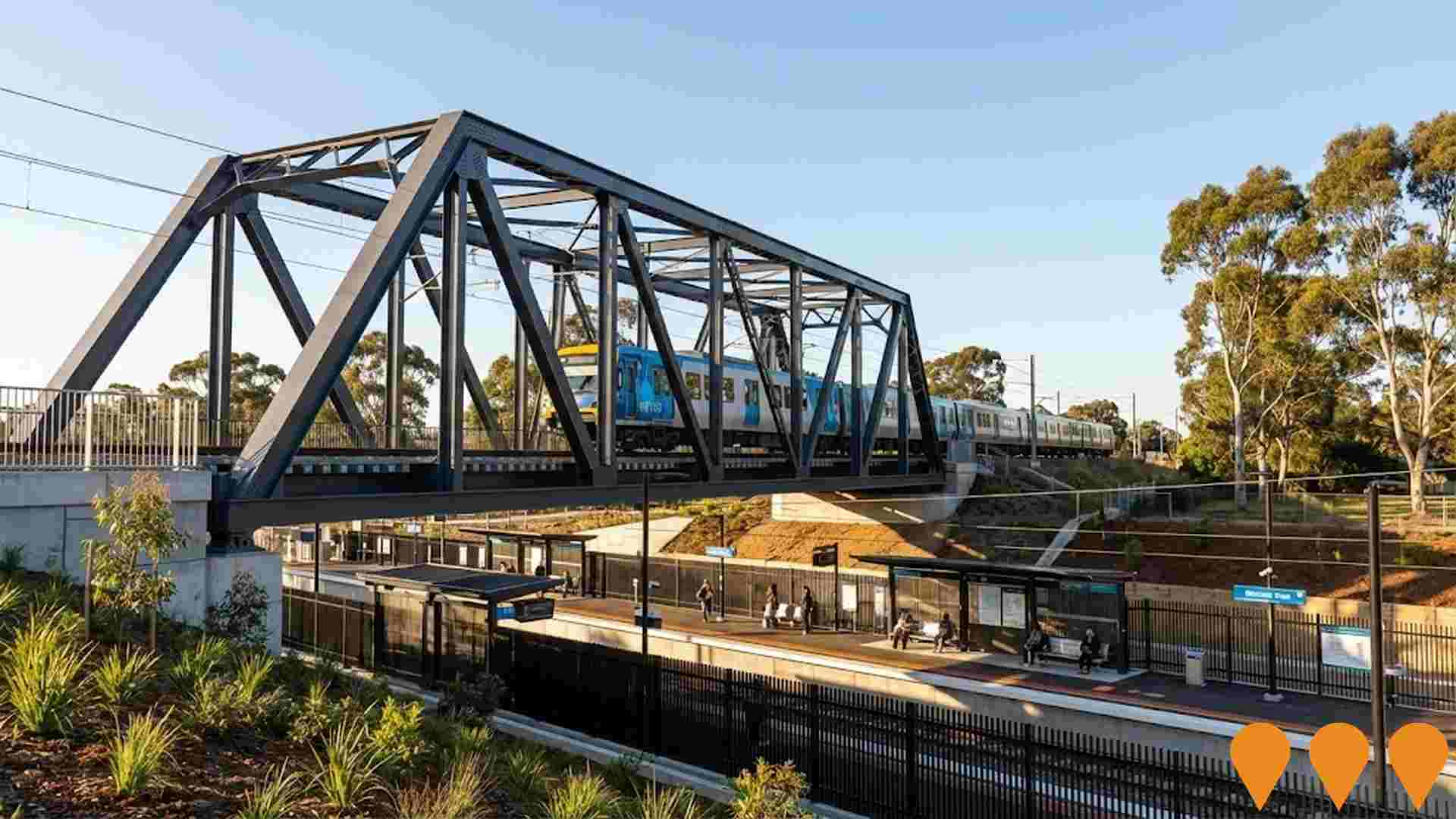
The Orange Door Cranbourne
The largest Orange Door access point in Victoria, providing integrated family violence and child wellbeing services to the southern Melbourne community. Offers free support including risk assessments, safety planning, crisis assistance, and connections to ongoing support services for families experiencing family violence or needing help with child and family wellbeing.
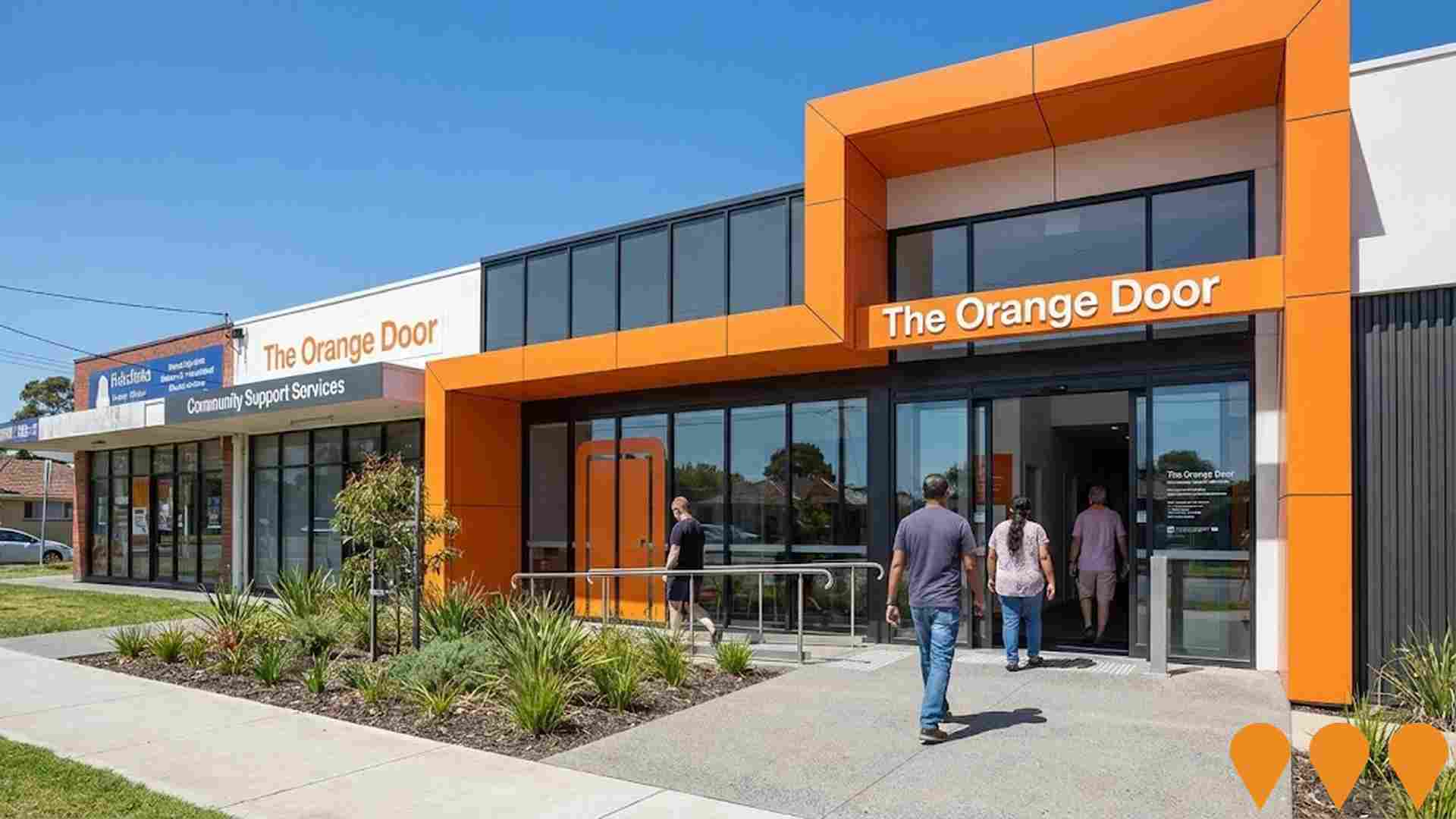
Summerset Cranbourne North
Summerset's first retirement village in Australia, delivering a full continuum of care including independent living villas, serviced apartments and an on-site care centre. Resort-style facilities include an indoor pool, spa, cafe, cinema, bowling green, gym, hair salon and community centre. As of November 2025, over 100 homes are occupied, stage releases continue and the community centre remains on track for completion in early 2026.
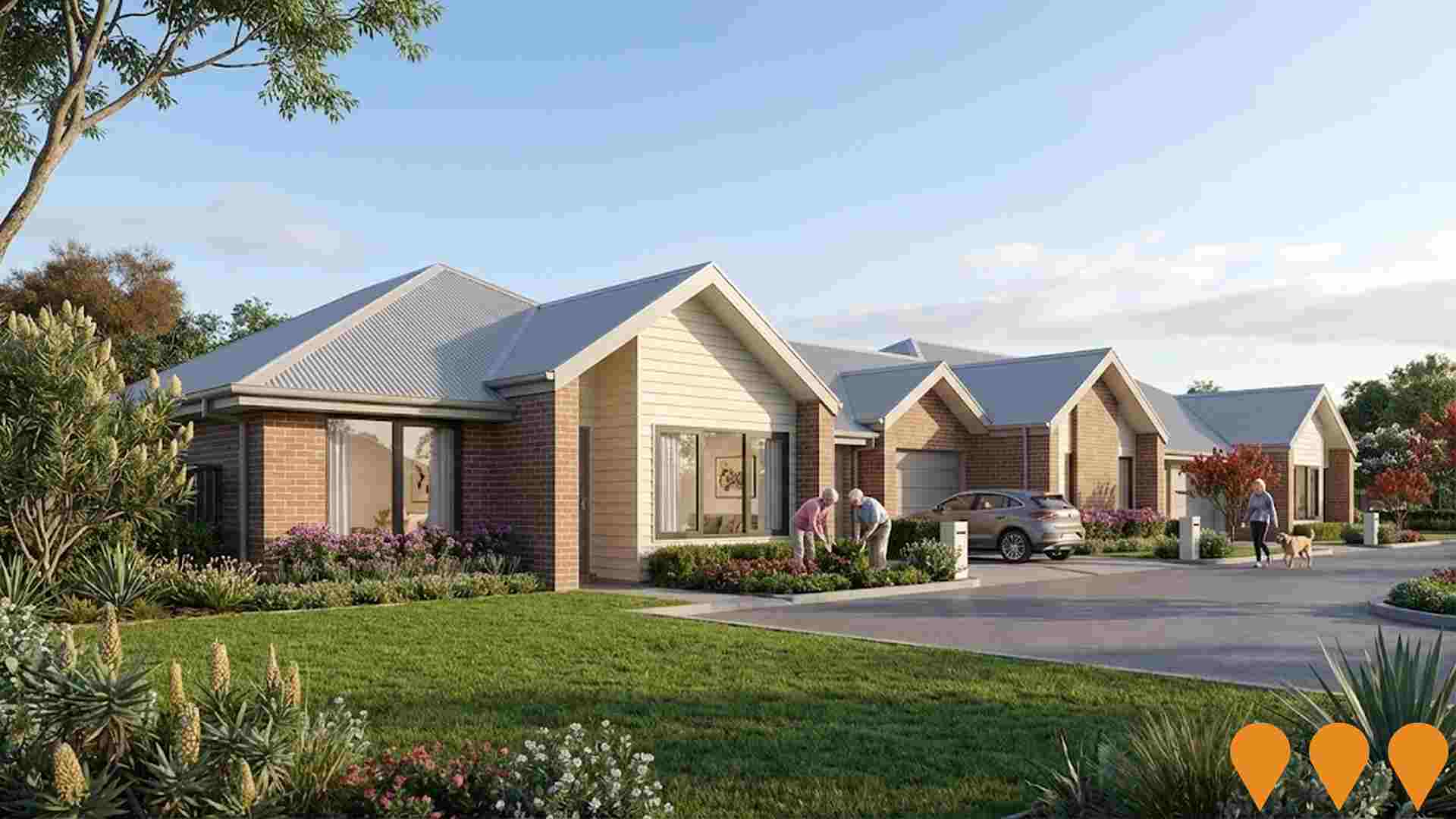
Cranbourne Park Shopping Centre Expansion
$120 million expansion and revitalisation of Cranbourne Park Shopping Centre, delivering around 12,500 sqm of new retail including Target, a large-format Coles, ~55 specialty stores, a gym and commercial space. Works were completed in 2015. The centre is currently co-owned by Vicinity Centres (50%) and IP Generation (50%) and managed by Vicinity Centres.
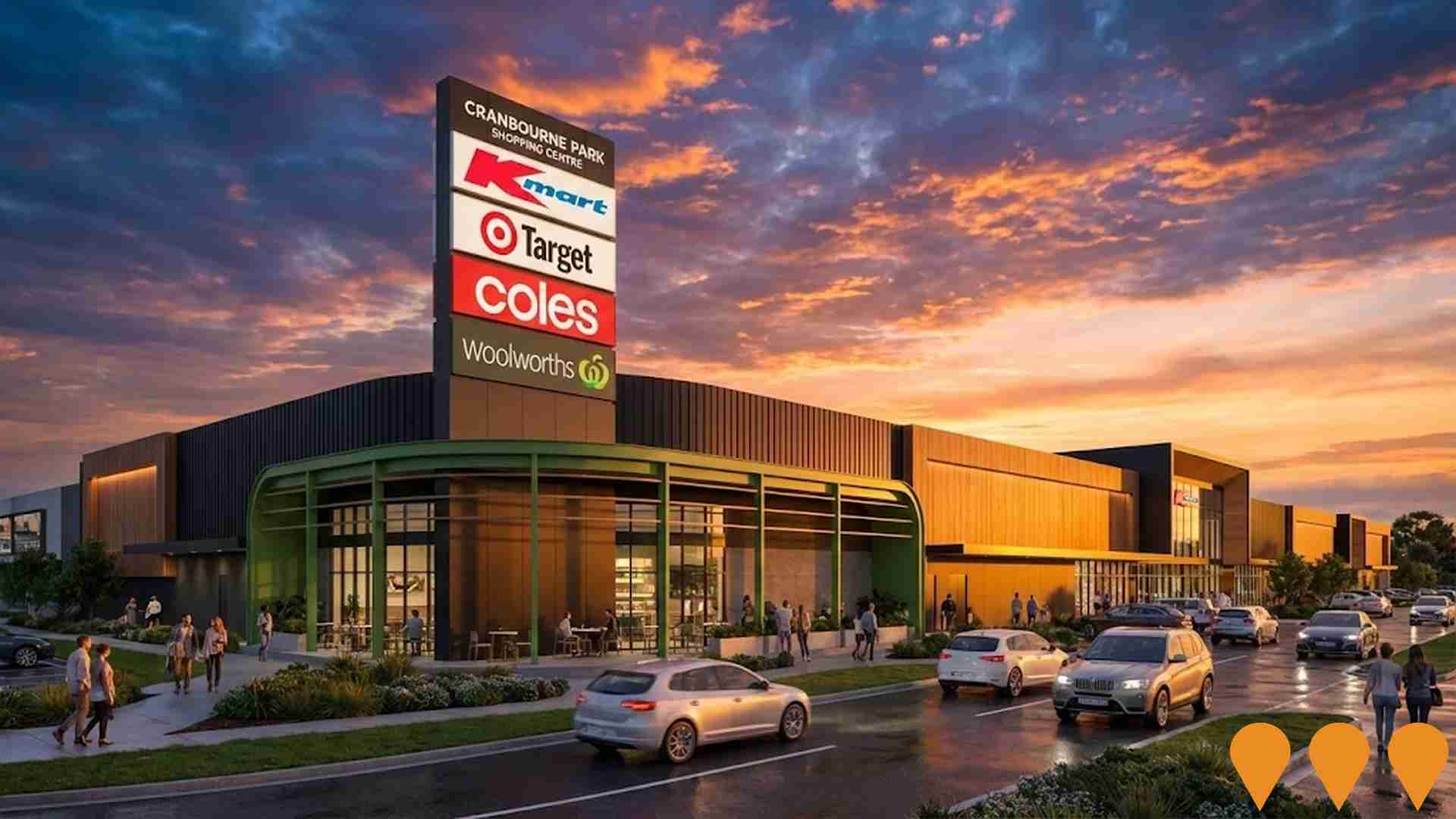
Cranbourne West Shopping Centre
A 100% leased neighbourhood shopping centre anchored by Woolworths supermarket with 15 specialty stores including Jetts Fitness, medical centre and pharmacy. Located 50 kilometres from Melbourne CBD with over 11,000 sqm of surplus development land for future expansion.

ESR Greenlink Industrial Estate
A 79-hectare industry-leading industrial estate in Melbourne's south-east, featuring sustainable facilities with 5 & 6 Star Green Star ratings, parkland, walking tracks, landscaping, and recreational spaces. Home to major logistics operators including Amazon, CEVA Logistics, Focus on Furniture, JAS Worldwide, and TW Logistics.

Employment
AreaSearch assessment indicates Cranbourne faces employment challenges relative to the majority of Australian markets
Cranbourne's workforce is skilled with notable representation in construction. The unemployment rate was 8.7% as of June 2025.
Employment growth over the past year was estimated at 3.3%. As of June 2025, 11,237 residents were employed, with an unemployment rate of 4.1%, higher than Greater Melbourne's 4.6%. Workforce participation in Cranbourne was 60.0%, below Greater Melbourne's 64.1%. Key industries for employment among residents are health care & social assistance, manufacturing, and construction.
Manufacturing is particularly strong with an employment share of 1.9 times the regional level. Professional & technical services are under-represented at 4.3% compared to Greater Melbourne's 10.1%. Employment opportunities locally may be limited as indicated by Census data. Between June 2024 and June 2025, employment levels increased by 3.3%, labour force grew by 4.4%, leading to a rise in unemployment of 1.0 percentage points. In contrast, Greater Melbourne saw employment rise by 3.5% and unemployment increase by 0.5 percentage points. Jobs and Skills Australia's national employment forecasts from May 2025 project a 6.6% growth over five years and 13.7% over ten years nationally. Applying these projections to Cranbourne's employment mix suggests local growth of approximately 6.0%% over five years and 12.8% over ten years, based on simple weighting extrapolation for illustrative purposes.
Frequently Asked Questions - Employment
Income
Income figures position the area below 75% of locations analysed nationally by AreaSearch
Income data from AreaSearch's latest postcode level ATO figures for financial year 2022 shows median income in Cranbourne was $45,710 and average income was $51,820. This is lower than the national averages of $54,892 (median) and $73,761 (average), which were recorded for Greater Melbourne during the same period. Based on a 12.16% increase in Wage Price Index since financial year 2022, estimated median income in Cranbourne as of September 2025 would be approximately $51,268 and average income around $58,121. According to the 2021 Census, incomes in Cranbourne rank modestly, between the 30th and 34th percentiles for household, family, and personal incomes. The earnings profile shows that 36.5% of locals (8,396 people) fall into the $1,500 - $2,999 income bracket, similar to the metropolitan region where 32.8% occupy this range. Housing affordability pressures are severe in Cranbourne, with only 81.4% of income remaining after housing costs, ranking at the 31st percentile.
Frequently Asked Questions - Income
Housing
Cranbourne is characterized by a predominantly suburban housing profile, with above-average rates of outright home ownership
In Cranbourne, as per the latest Census, 80.1% of dwellings were houses, with the remaining 19.8% being semi-detached homes, apartments, or other types. This differs from Melbourne metro's dwelling structure, which was 91.5% houses and 8.5% other dwellings. Home ownership in Cranbourne stood at 23.8%, with mortgaged dwellings at 41.5% and rented ones at 34.7%. The median monthly mortgage repayment in the area was $1,627, lower than Melbourne metro's average of $1,950. The median weekly rent in Cranbourne was $342, compared to Melbourne metro's $386. Nationally, Cranbourne's mortgage repayments were significantly lower than the Australian average of $1,863, and rents were less than the national figure of $375.
Frequently Asked Questions - Housing
Household Composition
Cranbourne features high concentrations of group households, with a lower-than-average median household size
Family households account for 72.0% of all households, including 33.4% couples with children, 21.0% couples without children, and 15.9% single parent families. Non-family households make up the remaining 28.0%, consisting of 24.1% lone person households and 3.9% group households. The median household size is 2.7 people, which is smaller than the Greater Melbourne average of 3.2.
Frequently Asked Questions - Households
Local Schools & Education
Educational outcomes in Cranbourne fall within the lower quartile nationally, indicating opportunities for improvement in qualification attainment
The area's university qualification rate of 16.9% is significantly lower than Greater Melbourne's average of 37.0%. Bachelor degrees are the most common at 11.3%, followed by postgraduate qualifications (4.0%) and graduate diplomas (1.6%). Vocational credentials are prevalent, with 38.0% of residents aged 15+ holding them, including advanced diplomas (11.4%) and certificates (26.6%). Educational participation is high at 31.6%, comprising primary education (10.9%), secondary education (8.0%), and tertiary education (4.0%).
Cranbourne has a network of seven schools educating approximately 3,742 students, with typical Australian school conditions (ICSEA: 967) and balanced educational opportunities. The area's six primary and one secondary schools serve distinct age groups.
Frequently Asked Questions - Education
Schools Detail
Nearby Services & Amenities
Transport
Transport servicing is good compared to other areas nationally based on assessment of service frequency, route connectivity and accessibility
Cranbourne has 77 active public transport stops offering a mix of train and bus services. These are served by 17 different routes that collectively facilitate 9,074 weekly passenger trips. The city's transport accessibility is rated as good, with residents located an average of 288 meters from the nearest stop.
Service frequency across all routes averages 1,296 trips per day, equating to approximately 117 weekly trips per individual stop.
Frequently Asked Questions - Transport
Transport Stops Detail
Health
Health outcomes in Cranbourne are marginally below the national average with the level of common health conditions among the general population somewhat typical, though higher than the nation's average among older cohorts
Health indicators suggest below-average outcomes in Cranbourne. The level of common health conditions among the general population is somewhat typical but higher than the national average among older cohorts. Private health cover stands at approximately 46% of the total population (~10,627 people), compared to 49.1% across Greater Melbourne and a national average of 55.3%.
Mental health issues and asthma are the most common medical conditions in the area, impacting 9.2 and 8.5% of residents respectively. 68.8% of residents declare themselves completely clear of medical ailments compared to 76.4% across Greater Melbourne. The area has 13.6% of residents aged 65 and over (3,135 people), higher than the 9.6% in Greater Melbourne. Health outcomes among seniors present some challenges requiring more attention than the broader population.
Frequently Asked Questions - Health
Cultural Diversity
Cranbourne is among the most culturally diverse areas in the country based on AreaSearch assessment of a range of language and cultural background related metrics
Cranbourne's population comprises 36.2% born overseas, with 32.9% speaking a language other than English at home. Christianity is the predominant religion, practiced by 39.3%. The 'Other' religious category represents 4.5%, higher than Greater Melbourne's 6.5%.
In terms of ancestry, English (22.6%) and Australian (21.7%) are the most common, both higher than regional averages. 'Other' ancestry comprises 19.3%, lower than the regional average of 25.5%. Samoan (1.3%), Sri Lankan (0.8%), and Indian (5.3%) groups show notable differences compared to regional averages.
Frequently Asked Questions - Diversity
Age
Cranbourne's population is younger than the national pattern
Cranbourne's median age was 35 years in 2021, slightly younger than Greater Melbourne's 37 and the national average of 38. The age group of 55-64 had strong representation at 11.3%, compared to Greater Melbourne, while the 85+ cohort was less prevalent at 1.2%. Between 2021 and present day, the population aged 35 to 44 grew from 14.2% to 15.3%, whereas the age group of 5 to 14 declined from 13.1% to 12.4%. Population forecasts for Cranbourne in 2041 indicate significant demographic changes. The age cohort of 45 to 54 is projected to increase by 989 people, rising from 2,725 to 3,715. Meanwhile, the 0 to 4 age group grows by a modest 1%, adding 11 people.
